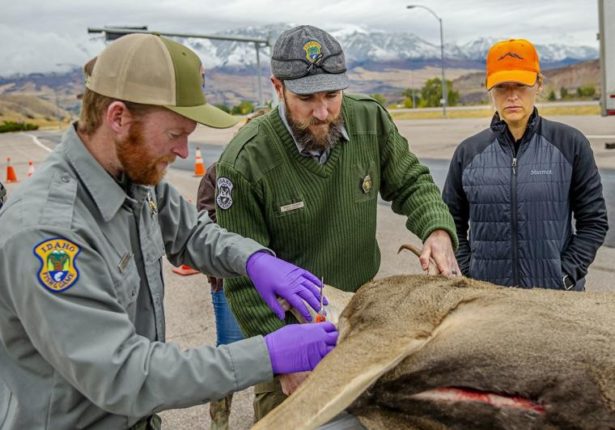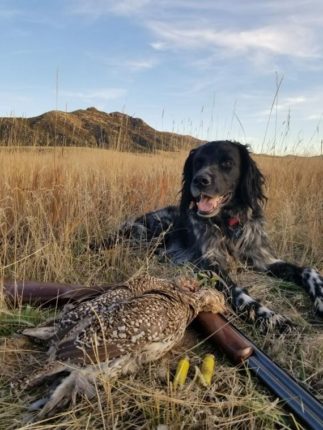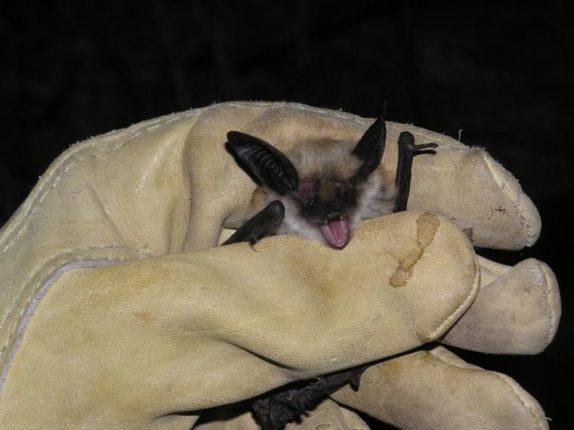Checking in at check stations, why there is a proxy statement in your wallet and a refresher on the motorized hunt rule — here’s what you need to know before you head outdoors.
Deer opener update
Deer season opened under rainy and snowy conditions in Southeast Idaho on Oct. 10, but precipitation didn’t dampen the success of those hunters who hit the hills. In fact, opening day of 2018 showed a modest increase in hunter success over last fall’s opener, a trend that continued over the weekend.
|
Check Station Results – Southeast Region |
|||
| Opening day | 2016 | 2017 |
2018 |
| Number of hunters | 289 | 127 | 190 |
| Mule deer harvested | 62 | 16 | 28 |
| Hunter success | 22 percent | 13 percent | 15 percent |
| Opening weekend | 2016 | 2017 | 2018 |
| Number of hunters | 694 | 574 | 542 |
| Mule deer harvested | 137 | 59 | 115 |
| Hunter success | 21 percent | 11 percent | 21 percent |
2017 hunting seasons were affected by an exceptionally severe winter that year. Mule deer fawn survival was extremely low in many areas of Southeast Idaho during the winter of 2016-17, and in some parts of the region, adult deer mortality was high. Bottom line, fewer deer — especially two-points — were available to hunters last fall.
Contrast that to the 2018 hunting season thus far — a milder winter of 2017-18 has contributed to a higher fawn survival, explaining the higher number of yearlings coming through check stations. So far, check station data shows that two-points make up a significant portion (48 percent) of the total mule deer harvested, whereas the total percentage of yearlings harvested during the same time frame last year was only 17 percent.
It takes more than one mild winter for a mule deer population to recover or achieve the age class distribution of previous years, but it looks like mule deer numbers are at least heading in the right direction. Final check station data will be provided at the end of the season later this month.
Check stations are not optional
What happens to hunters and anglers who “blow by” a check station on the way to or from the field? They could see the flashing lights of Fish and Game enforcement in their mirrors. That’s because stopping at a check station is required by law for those who are hunting or fishing, even for those without harvested game.
Check stations are a great way for Fish and Game staff to talk to hundreds of sportsmen and sportswomen, and those stopping at check stations should feel free to ask questions or make suggestions. The information that is collected is crucial for understanding what hunters and anglers are seeing in the field, and it allows us to better manage your wildlife resource. Our goal is to get the data we need, answer your questions, and get you on your way quickly.
Here are a few reminders to make your check station visit pleasant, quick and efficient: If you have harvested game, Fish and Game staff will want to look at the animal, and your license and tag. It will save you and them time if the animal is easily accessible. It takes a few minutes to collect all the data we need, so feel free to shut off your vehicle and step out to stretch your legs.
Please use caution when pulling into and out of a check station. Keep an eye out for hunters and staff walking around the station, and be careful if you are pulling out onto a busy highway.
Failure to fill out a proxy statement
A common mistake of hunters is the failure to complete a proxy statement when required. If you’re transporting game for someone else, you must have a completed proxy statement that provides information about whose animal you are transporting and gives you permission to do so.
Don’t have a proxy statement form? Check your wallet. It’s probably there, crammed in with your license and tags. That’s because in 2018, proxy statements were issued to hunters at the same time they purchased their tags.
If you threw yours away, blank statements can be found in any of the Fish and Game regulation booklets available at Fish and Game offices or at your favorite license vendor.
Refresher on motorized vehicle rule
If you are hunting big game in a unit with the Motorized Hunting Rule in effect, you cannot use your motorized vehicle as an aid to hunting. Some hunters think this just means that they can’t shoot a gun or bow from the seat of their four-wheeler. But it also means that you cannot travel on off-road trails with your ATV to transport hunters and hunting equipment, to get to your favorite ridge or to actually hunt or otherwise aid in a hunt. In areas with the MHR in effect, ATVs can only be used as an aid to hunting on roads open to full-sized vehicles, like your pickup truck.
There are some exceptions. Hunters can use their ATVs to retrieve downed game or to take in or pack out a camp — but they must stay on trails open to travel and they cannot hunt while doing those activities.
The MHR does not apply to hunters with disabilities provided they are holders of a valid disabled person’s motor vehicle hunting permit.
Remember, not all hunt units have the MHR, and it does not apply to private property or to those who are not hunting big game.
The MHR is intended to manage conflicts among hunter user groups and address the vulnerability of big game and trophy species.
Still have questions? Visit our website at idfg.idaho.gov/hunt/access/motorized-vehicles or give your nearest Fish and Game office a call.
Jennifer Jackson is the Regional Communications Manager for the Idaho Department of Fish and Game, southeast region.


